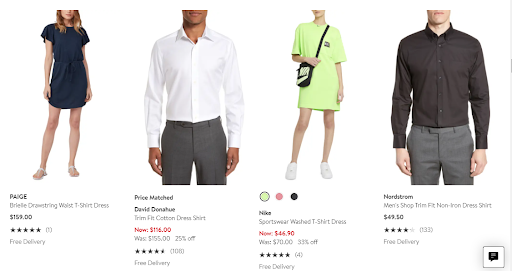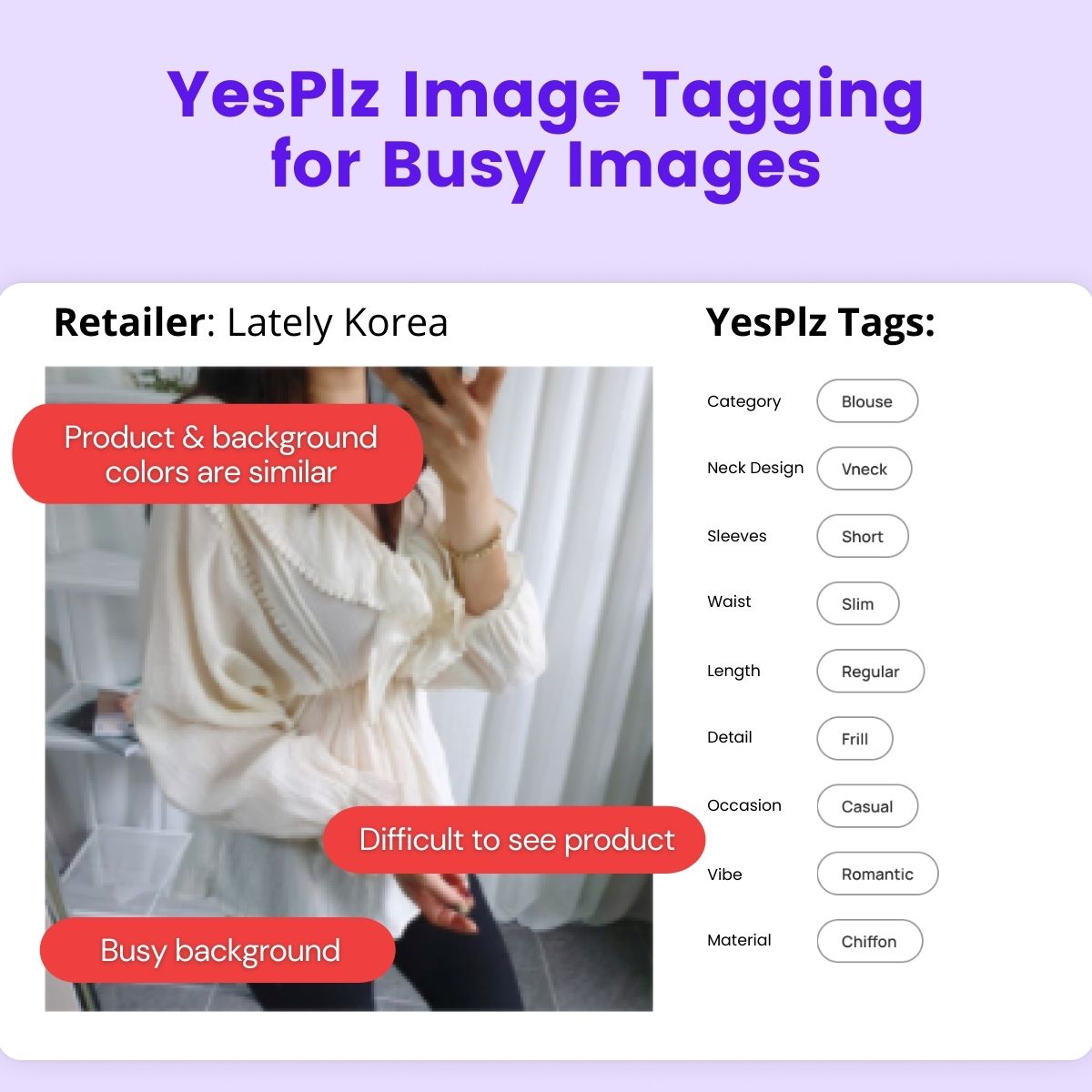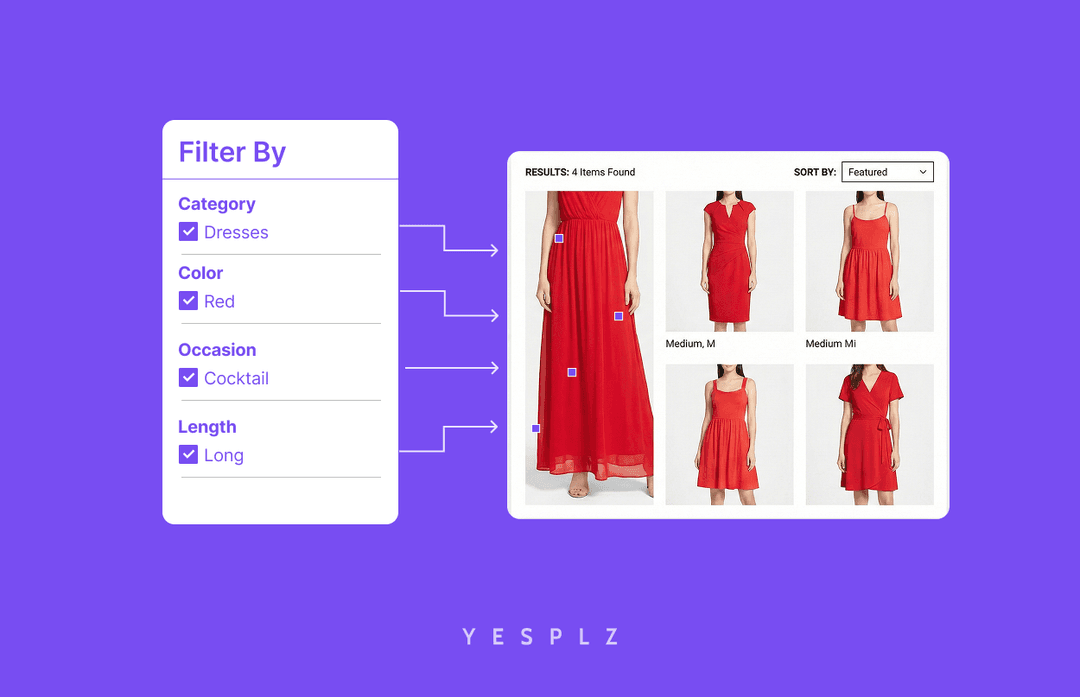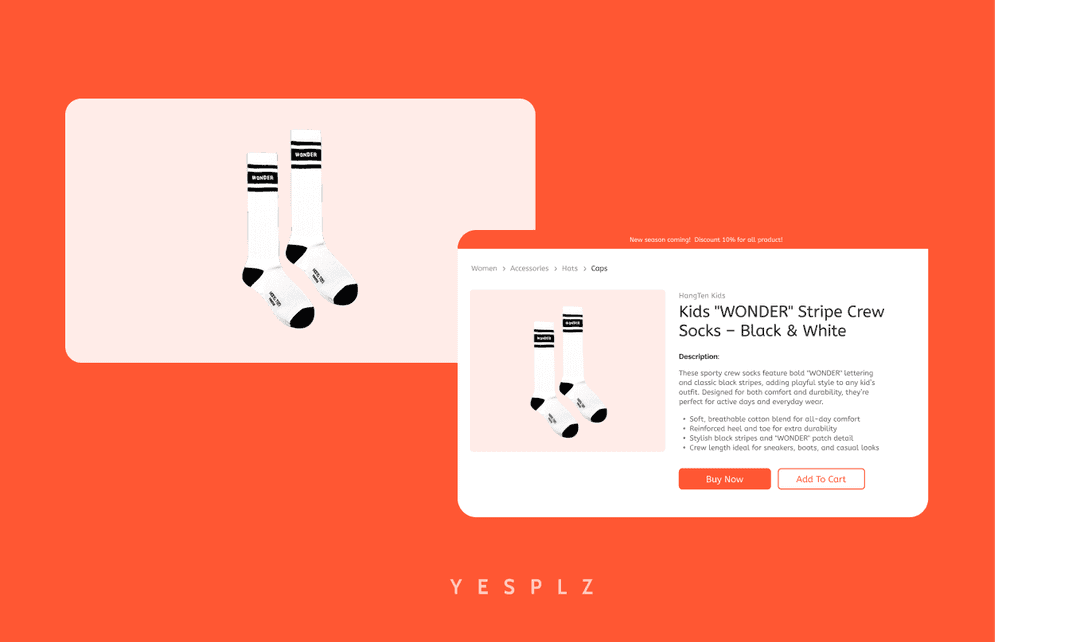
A shopper lands on your website and navigates to the search bar. She wants a red skirt, mid-length, with a fun, playful print. When she types in her search query for “red midi skirt,” the shopper receives dozens of relevant search results.
The building blocks of these search results (and even product recommendations) is image tagging (also known as fashion tagging).
Behind the scenes, a human tagged each of the product attributes by hand, a painful task when considering the hundreds or thousands of products uploaded on an eCommerce website per day.
Unfortunately, manual image tagging can take hours to complete and is prone to errors. For example, one human tagger might label the red skirt as “mid length skirt” and another human tagger might consider the skirt to be a “midi-skirt,” leading to inaccurate product data.
But, is there an easier way to tag that saves time, energy, and is more accurate?
The answer: building an artificial intelligence that understands fashion product attributes to correctly tag information.
In this blog post, we’ll walk you through:
Fashion tagging (or automated product tagging) is the process of labeling product attributes on an image. A product attribute can include all different elements of a product, from a design style to color and material type. A single clothing category can have between 20 to 60 different attributes, which can take significant time to tag the attributes of a single product image.
If we look at the dress below, it would have about 9 different attributes including: dress category, neck design, material, and mood or occasion.

Traditionally, a member of the merchandising/eCommerce team is responsible for tagging. Designers and third-party vendors provide tagging information, and the in-house team is responsible for cleaning up and organizing the tags.
But, when information comes in from third parties, it can be inconsistent.
Depending on the vendor, they may have a different word for "lace"--and when you take into account the sheer volume of products that need to be tagged, this inconsistency creates a mess for fashion eCommerce.
Alternatively, the in-house merchandising experts may make tagging mistakes (we're all human, after all).
Because of the complications of fashion tagging, some fashion eCommerce brands may skip it altogether to save time.
While it may be tempting to skip, without accurate fashion tagging, your eCommerce brand can't:
Automated product tagging contains crucial information that enriches a shopper’s online experience.
If your eCommerce is looking to implement the next great personalization tool, image tags provide the building blocks to do so.
Fashion image tagging creates the foundation for a superior shopping experience
When asked to describe a superior online shopping experience, shoppers will consistently answer that search and recommendations are a key differentiator among the crowded fashion eCommerce space.
Without fashion tagging, shoppers need to rely on very limited information to find what they’re looking for–and they have difficulty finding search results that meet their needs.
Bad autoamted product tagging creates a bad online shopping experience.
While shoppers may not understand the mechanics of why their experience is bad, they will interpret a poor online shopping experience as a cue to not return.
Fashion tagging doesn’t need to be a “necessary evil” for retailers–but can be an enjoyable experience
For retailers, fashion image tagging is a necessary but tedious task. When manually tagging, a single batch of products requires days of work–including tagging and double-checking fashion terminology. And we know that retailers are tired of doing work–and receiving little in return.
Unfortunately, it’s not an option to skip fashion tagging--without it, retailer product catalogs would be disorganized. Without fashion tagging you can’t have powerful and accurate site search, fashion-forward recommendations, or well-organized data to personalize user experiences.
But, poor automated product tagging tools can still cost retailers hours of time, correcting mistakes and re-sorting taxonomies.
There are hundreds of fashion tagging tools on the market, but not all of them are created equal.
Even if they’re powered by artificial intelligence, it’s important to remember that artificial intelligence is only as good as the input data that trained the algorithm.
And, when artificial intelligence makes mistakes, fashion experts with a deep understanding of fashion should be the ones to review those mistakes.
Other considerations when choosing a fashion tagging tool are:
Lastly, we recommend that you review the types of tags you’d like to see (specific styles, details, moods, or occasions) and make sure that the image tagging tool can quickly and accurately tag for your criteria.
A shopper wants to buy a shirtdress, defined as a women's dress with a collar and buttons. She types in her search query and receives two sets of results:
Result #1: Search Results Without Image Tagging

The retailer relied on text tagging to create product tags, leading to mixed search results that include t-shirt dresses and men’s shirts–unrelated to the shopper’s original search query.
These search results highlight the importance of image tagging–a good image tagging tool would be able to identify the product type and product attributes.
Result #2: Search Results With Automated Product Tagging
Next, the shopper searches for a shirtdress with YesPlz’s Style Filter. She receives the following search results, which are clear and accurate:

The difference between the two search results? Automated product tagging. In the second set of search results, YesPlz AI image tagging has correctly identified and tagged the product attributes, leading to accurate, robust search results.
Are you curious to know more about how YesPlz image tagging works? Let’s go behind the scenes and explore the YesPlz process and why we’re different from other solutions.

Here is the YesPlz process for ensuring accurate and fast image tagging:
Step 1: Before building our tool, we defined key fashion attributes that matter to shoppers through user interviews.
We started with user interviews and sat down with shoppers to define what key fashion attributes they care about the most. Our interviews took hours of probing each individual to find out more about their most important attributes. And, as a result, we’re happy to say that our image tagging tool reflects the real needs of shoppers.
Because of the preparation we’ve put into our image tagging tool, retailers can be assured that our fashion tagging tool tags product attributes that shoppers are searching for, such as fit, style, and occasion.
We have a clear understanding of the criteria for tagging, leading to more accurate tagging from the start.
Step 2: We train the AI using image and text–then fashion experts correct the AI.
AI Training:
Through a combination of computer vision and Natural Language Process (NLP) technology, YesPlz AI is able to do deep image tagging which is accurate, fast, and seamless. In addition, our technology can identify product attributes even in all sorts of image types whether the clothing image is on or off a model, even if the image has a noisy background or is user generated content.

Step 3: Fashion expert intervention:
Fashion AI will inevitably make incorrect inferences–but who is catching those mistakes? At YesPlz, our fashion data annotators are from Parsons School of Design and Fashion Institute of Technology. They understand the details of fashion, and are up-to-date on the latest fashion trends and terminology.
We have fashion data annotators in-house that speak the language of fashion, leading to highly accurate tagging. The result of AI training with computer vision and NLP, combined with our data annotators from fashion backgrounds is fast, accurate image tagging for retailers.
Step 4: We provide data enrichment and image tagging output for retailers.
The last step in the YesPlz image tagging process is output that helps retailers make better decisions through data. We provide retailers with data enrichment using an API that allows retailers to easily receive image tagging information in an easy-to-use format that fits their preferences. In addition, our data output is available in English, Korean, and Arabic.
Is your eCommerce interested in image tagging? We can create custom solutions to your needs.
Good, quality automated product tagging is necessary to build out dynamic search and recommendations and hyper-personalization. While image tagging is very much “behind the scenes,” your customers are affected by poor image tagging when they receive mismatched search results or off-target recommendations.
Image tagging, when accurate and quick, can provide better quality data for your fashion eCommerce, which you can then use for personalization.
But, the common objections we’ve seen to image tagging are:
1) it’s inaccurate
2) it takes too long
YesPlz AI is solving these problems for retailers by providing fast, accurate fashion tagging. Our AI is trained to recognize product attributes in all types of pictures, even low-quality images, and is then reinforced with the input of fashion experts.
Are you interested in keeping up-to-date with the latest retail and eCommerce trends?
Follow YesPlz AI on LinkedIn

Written by YesPlz.AI
We build the next gen visual search & recommendation for online fashion retailers

Stop losing sales to poor product filtering. Discover how AI simplifies creating Shopify filters, saving you 25-50 hours per 100 products.
by YesPlz.AI

Automate Shopify product pages and cut 50–100 hours of manual work. AI generates product titles, descriptions, and metadata instantly from product images.
by YesPlz.AI